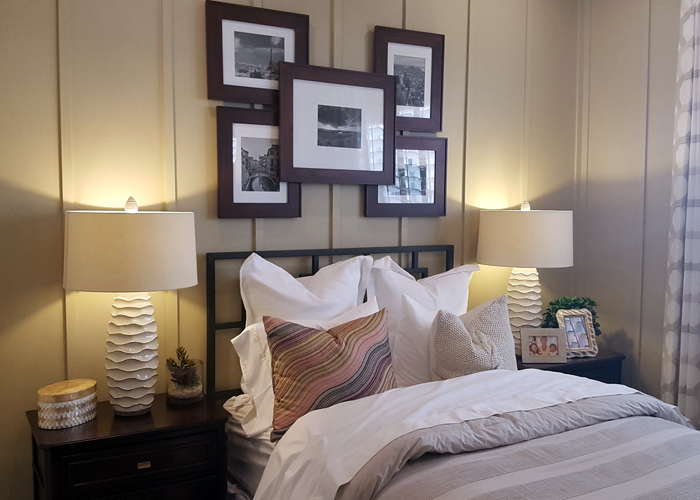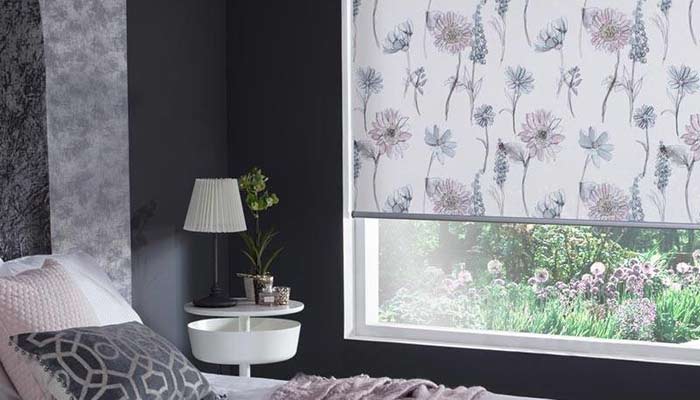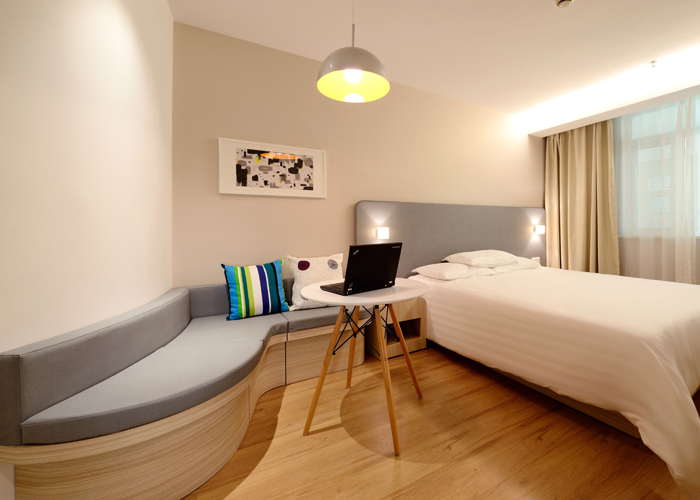These days, small spaces like tiny houses, urban studio apartments and quaint cottages have become less of a temporary dwelling situation, and more of a movement.

It’s a rising trend – ‘tiny home living’ has seen a 137% increase in interest on UK Google searches since January, whilst ‘downsizing’ has seen a 60% increase in the same time.
Along with the obvious financial advantages, living small appeals to a large demographic because it gives us the opportunity to cut the clutter, enjoy the added benefit of less upkeep, and focus on leading a more self-sufficient lifestyle.
Furniture company, Zinus, offer 10 top tips to make a small bedroom feel bigger, inspired by downsizing and tiny homes living trends.
1. Think ‘Flex Space,’ focus on function
It’s easy to get carried away creating a bedroom which looks magazine-shoot ready but when you’re taking inspiration from tiny homes, you need to think practically. Ask yourself, what will I be doing with this room, how do I want to feel in it? There’s a rising trend in what’s called ‘flex space’ – which is all about taking neglected and forgotten corners of rooms and rethinking their purpose. Typically used in areas like hallways and beneath staircases, think about carrying this over to the bedroom. Can a corner become both storage and a dressing area? Doubling up adds double the function and is key to tiny home living.
2. Encourage natural light
A good trick to making a bedroom feel bigger is to encourage natural light. A lot of tiny homes are built in areas of natural beauty and often compromise wallspace for large windows to let as much natural light in as possible. It’s harder to get that morning sun if your room is on the wrong side of the house, or you like in an overlooked city-centre apartment, but using mirrors and making sure all your windows remain clutter free is a great way to bring extra light in. In an ideal world and if you’ve got the funds, installing a skylight so you can see stars and wake to natural light is the ideal solution.

3. Bring outdoors, indoors
If you haven’t got big windows and are struggling to bring the light in, you can create a similar effect by bringing lots of outdoor touches inside. Plants alongside wooden textures give a sense of the forest and all the calm that comes with it, helping to trick the mind into thinking of the outdoors, which we then associate with open space. Botanical wallpaper and elements of biophilic design can help too – so look to incorporate floral and jungle patterns alongside as many indoor plants as possible. You want to emphasise a connection between the home and nature.
4. Create cohesion
When you have a smaller bedroom, it’s important to use a colour palette and aesthetic that’s consistent and works towards creating a more spacious feel. Clashing colours can break harmony and make rooms feel smaller. So think about a consistent scheme on walls and consider painting things like the doors, the trim, the coving, all the same colour as this will create more space visually. If you do want to break things up a bit, wallpaper draws the eye up and a feature wall, say behind a bed, can help a small bedroom feel larger. Failing that, use a bookcase or plant to get a similar effect. Light tones work better than dark tones in bedrooms too.
5. Choose the perfect bed for your space
Finding the perfect bed for your small space can seem like a worry, as beds do generally monopolise the room. But there are certain bed frames which fit better in small rooms. Opting for a frame without a footboard is a must, as that’ll make the space feel less boxed in, and look for something like an open frame headboard which isn’t too domineering, or failing that, a headboard with very clean design and lines that pulls the bed in on itself. The Zinus Maddon bed frame for example is modestly sized, with a low 35-inch headboard which adds character to the bedroom without taking over. The bed-frame lifts up for storage too, doubling up functionality. In tiny homes, beds are often built into units and become features themselves.

6. Mirrors
Mirrors are a wonderful way to create an illusion of space when you don’t really have any. They reflect light around the room, so look to the darkest corners and think about adding wall mirrors there. Floor to ceiling mirrors will make a tiny bedroom feel much larger. If space is short, think about combining your mirror and wardrobe, or about bringing in mirrored surfaces throughout the room. Glass tables help create the illusion of space.
7. Look to introduce rustic textures
In contrast to bringing in reflective surfaces and mirrors, you can create depth in a room by going the other way and bringing in different rustic textures. Not only does this recall tiny homes living – those gorgeous little wood cabins you’ve seen on design shows on TV – the wood creates a cosy sense of calm and warmth, especially when paired with woven rugs and tassels. It’s important however to stay on top of clutter – too much mess will make a small bedroom feel claustrophobic.
8. Furniture Is Key
If floor space is limited, you need to make every piece of furniture count. So don’t pick huge pieces which then overwhelm the bedroom. Tiny home living is all about functionality. So don’t be afraid to downsize – avoid anything that’s too bulky and takes up too much physical or visual space. Think thin – thinner pieces that sit along walls which give you more space, which is important in a bedroom when the bed takes up so much room anyway. Choosing the way the lines flow in your room – and not clashing vertical with horizontal – can help the room feel bigger too.
9. Think about floating books
Book lovers will do best taking advantage of floating shelves, which will make walls feel more open whilst providing useful storage for any space. Tall thin bookshelves which reach the ceiling also create a sense of size within a room.
10. Loft your Bed
Obviously this isn’t going to be feasible for everyone. But if you really want a bedroom inspired by tiny home living, consider ways to get your bed on its own little mezzanine platform. Not only is there something adorably child-like about sleeping up high, you can essentially double the space in a small bedroom by turning the area below into seating, storage or a dressing area.




